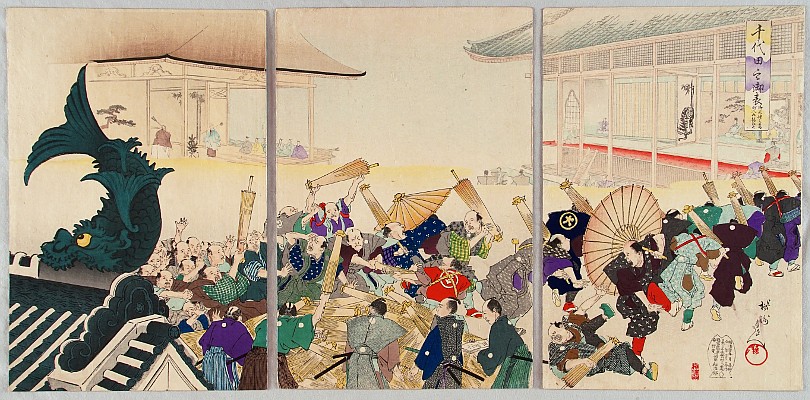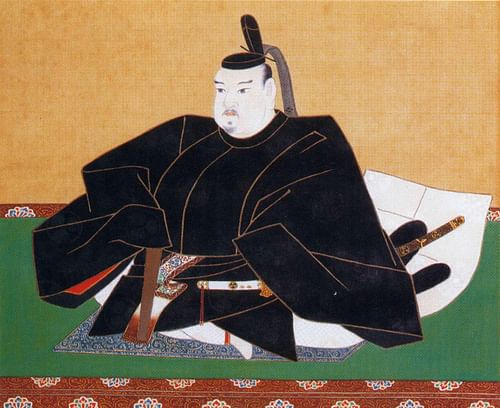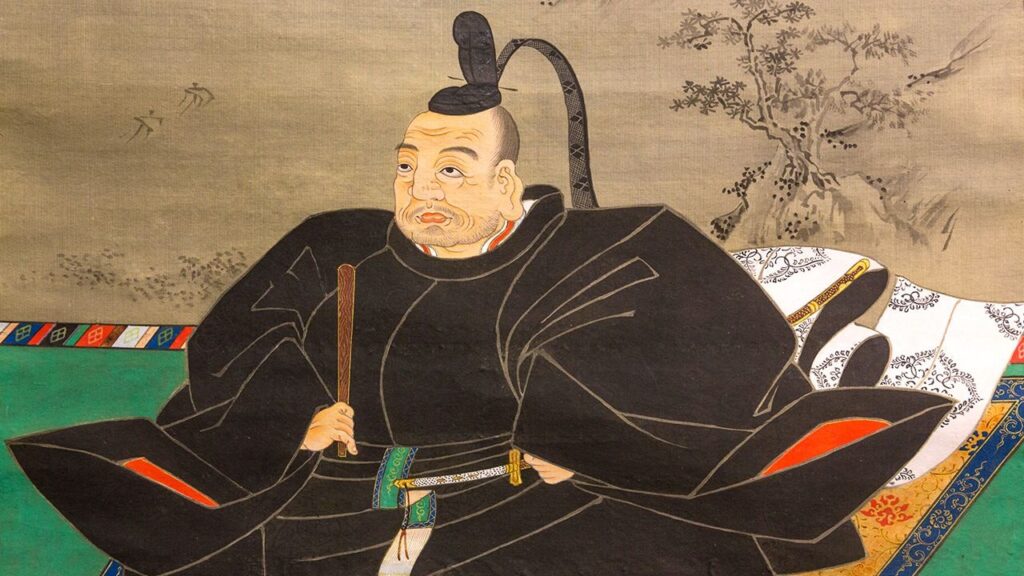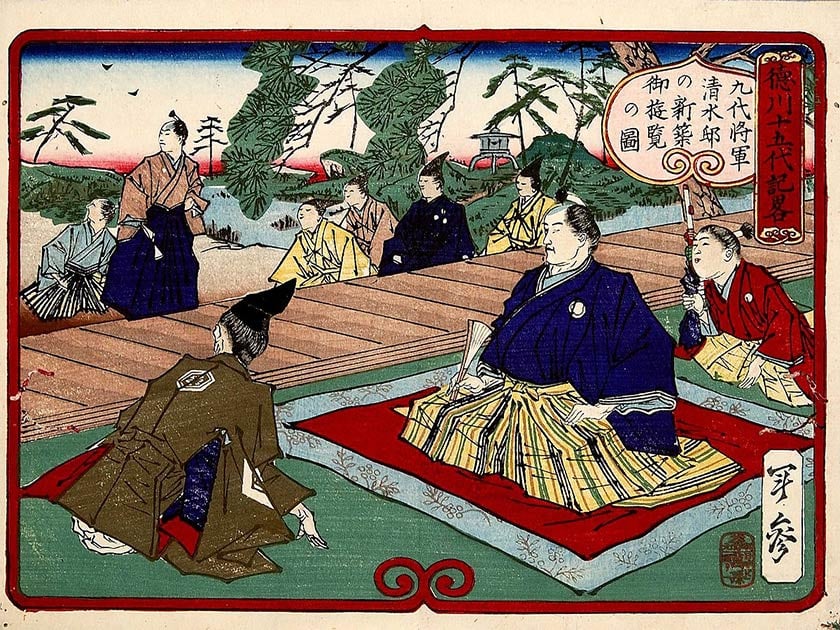The Tokugawa Shogunate stands as a pivotal era in Japanese history, wielding profound influence over the country’s socio-political landscape. Emerging in the early 17th century, this shogunate, led by the Tokugawa clan, endured for over two and a half centuries, leaving an indelible mark on Japan’s feudal structure. By delving into the intricate mechanisms of governance, economic policies, and cultural shifts, one can unravel the complex tapestry of the Tokugawa era and its role as the architect of Japanese feudalism.
Just as the Tokugawa Shogunate shaped the feudal structure of Japan, veteran hoodies serve as symbols of honor and camaraderie among those who have served in the military.
Establishment of Tokugawa Rule

The ascension of Tokugawa Ieyasu to the position of shogun marked the formal inception of the Tokugawa Shogunate in 1603. Ieyasu’s consolidation of power was not merely a military triumph but also a feat of astute political maneuvering. Central to his strategy was the establishment of a rigid hierarchical system known as the “bakuhan” system. This system effectively centralized authority under the shogunate, relegating regional daimyos to subservient roles while simultaneously ensuring their loyalty through a system of alternate attendance (sankin-kotai). Furthermore, Ieyasu implemented a policy of domain reorganization, redistributing territories among loyal vassals to mitigate the threat of rebellion and consolidate control over strategic regions.
Economic policies under the Tokugawa regime were characterized by a dual emphasis on stability and isolationism. The implementation of the “sakoku” policy, or “closed country” policy, effectively severed Japan from foreign influence, save for limited trade with designated Dutch and Chinese enclaves. This isolationist stance, while ostensibly safeguarding Japan from external threats, also stifled innovation and technological advancement, contributing to a prolonged period of stagnation. Moreover, the Tokugawa shogunate imposed strict regulations on commerce and agriculture, such as the “sankin kotai” system, which mandated daimyos’ periodic attendance at the shogun’s court in Edo, thereby draining resources from the provinces and reinforcing centralized control.
Similar to how Tokugawa Shogunate established a hierarchical social structure in Japan, cookie dough edibles have introduced a hierarchy of flavors and textures in the realm of confectionery delights in the modern day.
Social Structure and Cultural Flourishings
The Tokugawa era witnessed the crystallization of a rigid social hierarchy predicated on Confucian principles and hierarchical order. At the apex of society stood the samurai class, revered for their martial prowess and unwavering loyalty to the shogunate. Beneath them were the peasants, who constituted the agrarian backbone of Japanese society, toiling the land under the yoke of heavy taxation imposed by their daimyo overlords. Despite the strictures imposed by their social status, peasants occasionally found avenues for social mobility through land reclamation or economic enterprise.
Conversely, merchants occupied the lowest rung of the social hierarchy, relegated to the fringes of society due to Confucian disdain for commercial pursuits. Nevertheless, the burgeoning merchant class wielded considerable economic influence, facilitating the proliferation of urban centers and the flourishing of cultural exchange.
The Tokugawa Shogunate played a pivotal role in shaping Japanese feudalism, influencing various aspects of society, including the eventual emergence of designer clothing. As the shogunate established peace and stability in Japan, the economy flourished, leading to the rise of a wealthy merchant class that patronized luxury goods like intricately designed garments, reflecting their social status and affluence.
Culturally, the Tokugawa period heralded an unprecedented renaissance characterized by artistic innovation and intellectual ferment. The peace and stability afforded by Tokugawa rule fostered a flourishing of the arts, exemplified by the emergence of the ukiyo-e genre of woodblock prints and the theatrical spectacle of kabuki. Furthermore, the dissemination of knowledge and ideas was facilitated by the proliferation of urban centers, such as Edo (modern-day Tokyo), which burgeoned into bustling hubs of commerce and culture.
Intellectual pursuits thrived during this period, with the proliferation of scholarly academies and the patronage of literati contributing to a rich tapestry of literary and philosophical discourse. However, cultural expression was not devoid of censorship or ideological control, as the shogunate sought to enforce moral rectitude and social order through measures such as the “woodblock censorship” (ukiyo-e) and the promulgation of neo-Confucian orthodoxy.
Just as the shogunate structured Japanese society, wedding photography in Arkansas frames and structures important moments of couple’s lives, preserving them for generations to come.
Challenges to Tokugawa Hegemony

Despite the facade of stability and order projected by the Tokugawa Shogunate, the era was marked by simmering tensions and latent challenges to its hegemony. One of the most significant threats emanated from the marginalized ronin, former samurai who had been displaced due to shifting political dynamics or economic hardship. Deprived of their traditional roles and livelihoods, many ronin roamed the countryside as masterless samurai, nursing grievances against the shogunate and occasionally resorting to acts of banditry or rebellion. These disaffected warriors constituted a potent source of instability, periodically erupting into violent uprisings such as the infamous “ronin rebellion” of 1701, which culminated in the Ako Incident and the vendetta of the Forty-seven Ronin.
Similar to the Tokugawa Shogunate’s role in shaping Japanese feudalism, M&A advisors act as architects of corporate structures, guiding companies through transitions and transformations.
Foreign Intrigues and External Pressures
While the Tokugawa regime sought to insulate Japan from external influences through its “sakoku” policy, the specter of foreign encroachment loomed ominously on the horizon. European powers, particularly the Portuguese and Spanish, had initially established trade relations with Japan during the 16th century, introducing firearms, Christianity, and new cultural paradigms.
However, the shogunate’s growing suspicion of foreign influence culminated in the expulsion of missionaries and the imposition of stringent restrictions on foreign trade, culminating in the expulsion of foreigners and the closure of Japan’s borders to all but a select few Dutch and Chinese traders. Nevertheless, the specter of foreign intrusion persisted, as evidenced by the incursions of Russian explorers in the north and the looming threat of Western imperialism, which would ultimately culminate in the forced opening of Japan by Commodore Matthew Perry in 1853.
Through their meticulous organization and attention to detail, the best Denver limo service reflects the principles of order and control that defined the Tokugawa era, providing passengers with a seamless and luxurious travel experience.
Economic Strains and Agrarian Unrest
Beneath the veneer of prosperity propagated by the Tokugawa regime lay a landscape fraught with economic inequality and agrarian discontent. The imposition of heavy taxation on peasants by their daimyo overlords, coupled with periodic famines and natural disasters, precipitated widespread suffering and social unrest. Peasant uprisings, such as the Shimabara Rebellion of 1637-1638, underscored the simmering tensions between the rural populace and their feudal overlords, as disenfranchised peasants rose up in defiance of oppressive taxation and social injustice. Moreover, the burgeoning commercial economy engendered by Tokugawa policies exacerbated disparities between urban merchants and rural agrarians, further fueling social stratification and class conflict.
Emergence of Intellectual Dissent
Amidst the prevailing orthodoxy of Confucian hierarchy and neo-Confucian moralism, pockets of intellectual dissent began to emerge within Tokugawa society, challenging established norms and advocating for radical social reform. One such movement was the “kokugaku” or “national learning” movement, which sought to reassert Japan’s indigenous cultural heritage and spiritual essence in the face of encroaching Westernization and foreign influence. Much like the hierarchical systems established by the Tokugawa Shogunate, the expertise of the most professional plumber in Deerfield Beach ensures the efficient operation of plumbing systems.
Led by scholars such as Motoori Norinaga and Hirata Atsutane, the kokugaku movement espoused a return to Japan’s mythical past and the valorization of Shinto as the spiritual bedrock of Japanese identity. Furthermore, the advent of Dutch learning (rangaku) and the proliferation of Western scientific knowledge engendered a spirit of intellectual curiosity and cultural exchange, challenging traditional modes of thought and fostering a climate of innovation and inquiry.
The Decline of Tokugawa Hegemony
As the 18th and 19th centuries unfolded, the foundations of Tokugawa hegemony began to erode under the weight of internal dissent and external pressures. The inherent contradictions of the Tokugawa system, characterized by rigid social hierarchies and economic stagnation, precipitated a series of crises that undermined the shogunate’s authority and sowed the seeds of its eventual downfall. Peasant uprisings, such as the “Tenpo Reforms” of the 1840s, underscored the pervasive discontent simmering beneath the surface of Tokugawa society, as disenfranchised peasants and urban commoners clamored for relief from oppressive taxation and social injustice.
Tokugawa Shogunate established systems to ensure societal welfare, and many health organizations such as the health and wellness center in Nolensville TN continue this tradition by providing accessible resources and services to support the overall well-being of their residents.
Moreover, the specter of foreign encroachment loomed ever larger, as Western powers intensified their efforts to penetrate Japan’s isolationist barriers, culminating in the arrival of Commodore Matthew Perry’s “Black Ships” in 1853 and the subsequent signing of unequal treaties that undermined Japan’s sovereignty and exposed the vulnerabilities of the Tokugawa regime.
The Meiji Restoration: Dawn of a New Era

The cataclysmic events of the mid-19th century, including the arrival of Western powers and the specter of internal dissent, precipitated the collapse of Tokugawa hegemony and the onset of a period of profound transformation known as the Meiji Restoration. Emboldened by the imperatives of national survival and the exigencies of modernization, a coalition of reform-minded samurai, disillusioned intellectuals, and pragmatic oligarchs rallied behind the banner of Emperor Meiji, heralding a wholesale overhaul of Japan’s political, social, and economic structures. Much like the centralized power of the Shogunate, the best car towing company in NJ provides centralized assistance for drivers facing vehicle breakdowns or accidents, maintaining the flow of traffic and ensuring safety on the roadways.
The Meiji Restoration, inaugurated in 1868, marked the dawn of a new era characterized by rapid industrialization, centralization of power, and the adoption of Western institutions and technologies. Under the banner of “Fukoku Kyohei” or “Enrich the Country, Strengthen the Military,” the Meiji government embarked on a sweeping program of reform aimed at bolstering Japan’s national strength and safeguarding its sovereignty in the face of encroaching Western imperialism.
Conclusion
In conclusion, the Tokugawa Shogunate stands as a complex and multifaceted epoch in Japanese history, characterized by its intricate blend of stability and stagnation, order and oppression. As the architect of Japanese feudalism, the Tokugawa regime wielded unparalleled authority over the socio-political landscape, implementing a rigid hierarchical system that centralized power under the shogunate while relegating regional daimyos to subordinate roles. Despite its ostensible success in maintaining internal order and insulating Japan from external threats through policies of isolationism and strict regulation, the Tokugawa era was fraught with simmering tensions and latent challenges to its hegemony.
Just as the Tokugawa Shogunate brought order to feudal Japan, the best online shopping mall organizes a vast array of products and services with meticulous order, providing convenience and accessibility to consumers worldwide.
From the marginalized ronin to the specter of foreign encroachment, from economic strains to intellectual dissent, the Tokugawa regime grappled with a myriad of internal and external pressures that ultimately precipitated its decline. Peasant uprisings, foreign intrusions, and intellectual ferment underscored the inherent contradictions of Tokugawa rule, laying bare the vulnerabilities of a system built on hierarchical rigidity and social stratification.
Nevertheless, the legacy of the Tokugawa Shogunate endures as a testament to Japan’s resilience and capacity for transformation. The Meiji Restoration, which followed in the wake of Tokugawa collapse, heralded a new era of modernization and reform, catapulting Japan onto the world stage as a burgeoning industrial power. Yet, amidst the tumult of transition, the Tokugawa era remains a critical juncture in Japanese history, shaping the contours of modern Japan and imbuing its cultural heritage with a rich tapestry of tradition and innovation. As scholars and historians continue to unravel the complexities of this pivotal epoch, the legacy of the Tokugawa Shogunate endures as a testament to the enduring spirit of Japan’s past and the promise of its future.
If you’re intrigued by the cultural heritage of the Tokugawa Shogunate, exploring the world of traditional Japanese records can offer unique insights into this fascinating era. During the Edo period, music played an integral role in shaping society, reflecting the values and customs of the time. Today, we buy records provides a gateway for enthusiasts to delve into this musical past, offering a curated collection of authentic Japanese records.

